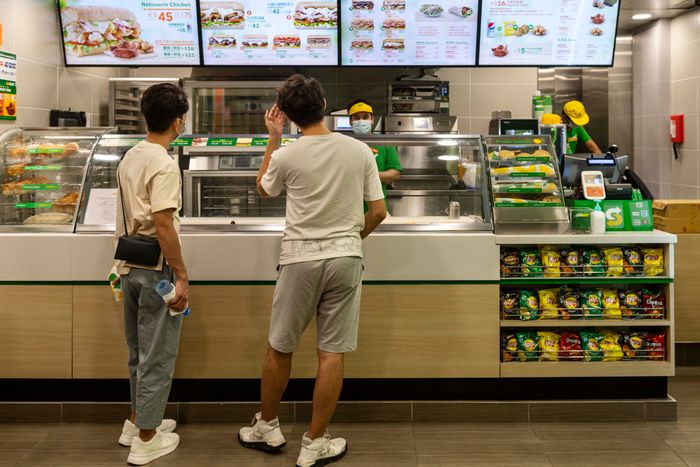Effective operational process for marketing sales and customer service
What sets organizations apart that thrive and keep customers satisfied amid intense competition? How is sustained growth and prominence achieved?
6 min read
Por Susana Matamoros | Jun 15, 2023
In an increasingly customer-centric world, companies that fail to adapt to this reality run the risk of disappearing. This is the case, for example, with many banks, as demonstrated by the latest survey from 10x Banking, which reveals a significant loss of customers due to their product-centric approach instead of a customer-centric approach.
But what happens when a company decides to pivot and put the customer at the center of its strategy? The example of Subway, the fast-food restaurant chain specializing in sandwiches and salads, is illustrative. Through its focus on continuous improvement of the customer experience, Subway has managed to reinvent and evolve the concept of the sandwich, turning it into a personalized and satisfying experience for each customer.
Subway understood it many years ago
So, let me tell you the story that revolutionized the way we eat sandwiches and how a young man and his business partner understood that the customer experience can make a difference. The story of Subway dates back to 1965 when Fred DeLuca, a 17-year-old college student, was looking for a way to finance his education. Together with his friend and business partner, Dr. Peter Buck, they decided to open a small sandwich restaurant in Bridgeport, Connecticut.
From the beginning, these two entrepreneurs had different perspectives on the direction the brand should take. DeLuca was focused on rapid expansion through franchising, while Buck had a more cautious mindset and preferred slower, controlled growth. Despite their differences, DeLuca and Buck managed to find a balance between their divergent ideas and navigate key decisions for the brand's future.
One of the key decisions for their brand was to make the restaurant and its products stand out, but how to do it? DeLuca focused on four key elements: space design, product customization, and innovation.
>>How to measure customer experience?<<
Space Design: DeLuca understood that space design could have a significant impact on the customer experience. Instead of typical fast-food restaurants with a standard setup, this young innovator sought an attractive and welcoming environment. He used bright colors, appropriate lighting, and a clean and organized design to create a sense of freshness and quality.
Product Customization: Another innovative idea from DeLuca was to allow customers to personalize their own sandwiches. He recognized that each person has unique tastes and preferences, and decided to give them the freedom to choose from a wide variety of breads, meats, vegetables, and sauces. This ability to customize allowed customers to create their own made-to-order sandwich and satisfy their individual preferences. This freedom of choice was a radical change compared to other fast-food chains that offered limited and predefined options.
Transparency in Food Preparation: Subway prepares sandwiches in front of customers, allowing them to see exactly what goes into their food and how it is prepared.
Menu Innovation: Subway has consistently innovated its menu by introducing new ingredients and sandwich combinations to keep customers interested and engaged.

In addition to the space redesign and product transformation, Subway also placed a greater emphasis on the customer experience. They trained their staff to provide friendly and attentive service, offering personalized recommendations and ensuring that customers felt valued and heard.
Furthermore, loyalty programs and special promotions were developed to reward loyal customers. These initiatives not only incentivized repeat visits but also reinforced the idea that customers were appreciated and had a special place in the Subway community.
Results of Subway's Changes
Subway's focus on the customer experience and the changes made to the space and products resulted in a notable increase in sales and customer loyalty.
Their innovative "Subway" system, where customers can see and select the ingredients they want in their sandwich one by one while employees prepare them on the spot, was essential. This allows customers to have complete control over their food and tailor it to their specific tastes and needs. Whether they prefer vegetarian, low-fat, gluten-free, or spicy options, Subway gives them the opportunity to choose and create a sandwich that fits their dietary preferences and individual tastes.
In addition to sandwich customization, Subway staff have a deep knowledge of ingredients and flavors, enabling them to provide personalized recommendations and suggestions to customers. Subway employees go beyond taking the customer's order; they are trained to inquire about preferences and offer suggestions to create a more satisfying sandwich experience. This personalized attention creates a sense of satisfaction and loyalty in customers, who feel valued and heard by the brand. The ability to offer personalized recommendations and ingredient knowledge also allows Subway to explore new flavor combinations and offer innovative choices to customers.
Even today, Subway continues to prioritize the customer experience.
Despite over 50 years having passed, they have not forgotten what made them great, and they continue to make changes, leveraging technology to further enhance the customization experience. Through their mobile apps and self-service kiosks in restaurants, customers can conveniently and accurately place their orders, selecting the exact ingredients they want in their sandwich. This streamlines the ordering process and allows for greater efficiency in preparation.

In addition to sandwich customization, Subway has used technology innovatively to improve the customer experience. Through their mobile apps and self-service kiosks in restaurants, customers can conveniently and accurately place their orders, selecting the exact ingredients they want in their sandwich. This streamlines the ordering process and allows for greater efficiency in preparation. But that's not all, Subway has also implemented a rewards program based on points, where customers can earn points for each purchase and redeem them for free sandwiches and other menu items. Additionally, through their Subway MyWay Rewards app, customers receive exclusive offers and personalized promotions based on their purchasing preferences and spending behavior. This customer loyalty strategy has worked well for Subway, as they have managed to maintain the loyalty of their customers and increase their base of frequent customers.
Subway's revolution in the way customers order and customize their sandwiches has made a lasting impact on the fast-food industry. Many other chains have followed their example, adopting similar customization systems and focusing on providing healthier options tailored to individual preferences.
Make Your Company the Subway of Your Industry
In today's highly competitive market, customer experience is one of the most important aspects that businesses must consider to excel. Customers no longer settle for a quality product or service; they expect a complete and satisfying experience. In fact, a positive customer experience is one of the key factors influencing customer loyalty and their willingness to recommend a brand to others. Therefore, companies must be willing to invest in customer experience and create long-term relationships with their customers if they want to succeed in the current market.
Customer experience refers to all the interactions and perceptions a customer has when interacting with a company. It is crucial because it has a direct impact on customer satisfaction, loyalty, recommendations, and ultimately, business success. Therefore, I invite you to analyze some actions that you can review and/or implement in your business:
1. Deep Understanding of Your Buyer Persona: The first step is to thoroughly understand your target audience. If you don't know them, I recommend building your Buyer Persona, which involves conducting market research, collecting demographic data, conducting surveys, and gathering information about your customers' preferences and needs. The more knowledge you have about your Buyer Persona, the better you can tailor your products, services, and communications to meet their expectations.
2. Mapping Buyer Persona Touchpoints: Identify and map the different touchpoints your prospects have with your company throughout their customer journey. These touchpoints may include website visits, social media interactions, phone calls, physical store visits, among others. By understanding each touchpoint, you can evaluate and improve the customer experience at each stage, ensuring it is consistent, satisfactory, and aligned with your brand values.
3. Customer-Centric Design: Use the knowledge you have gained about your customers to design experiences centered around their needs and desires. Consider how you can simplify processes, remove obstacles, and improve usability at every touchpoint. Make interacting with your company intuitive, personalized, and enjoyable, taking into account each customer's individual preferences.
4. Foster a Customer Service Culture: Customer experience is not limited to specific touchpoints; it is also influenced by your company's culture and values. Foster a customer service culture throughout your organization, where all employees are committed to delivering exceptional service. Train your staff in communication skills, empathy, and problem-solving, and promote the importance of listening and effectively responding to customer needs.
5. Feedback and Continuous Improvement: Implementing a successful customer experience strategy requires a focus on continuous improvement. Regularly collect and analyze customer feedback through surveys, social media comments, and other tracking tools. Use this information to identify areas for improvement and take corrective actions. Customer feedback is a valuable source of information to optimize the experience and deliver even better service in the future.
The story of Subway is a clear example of how a company can succeed by putting the customer at the center of its strategy. From its inception, this fast-food chain has understood the importance of the customer experience and has worked hard to deliver exceptional service.
Thanks to its focus on customer experience and attention to detail, Subway has expanded worldwide, with over 40,000 establishments in different countries. This demonstrates that when a company cares about its customers and works diligently to deliver exceptional service, it can succeed in any industry. Now I ask you again, is your company focusing on its products or its customers?
If you have any questions or want to expand your knowledge on any of the points explained throughout this article, I invite you to contact us at Imagineer so we can delve into this topic in more detail.

What sets organizations apart that thrive and keep customers satisfied amid intense competition? How is sustained growth and prominence achieved?

It is no secret that a company's most important resource is its customers; the business's success depends on them, which is why the concept of ...

Let's first talk about the value proposition, what is that? Simply put, the value proposition of your business is that "something" for which a...